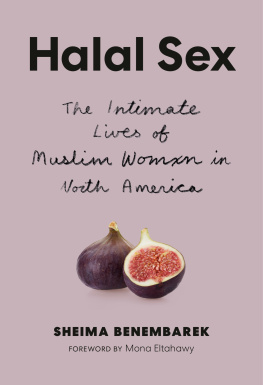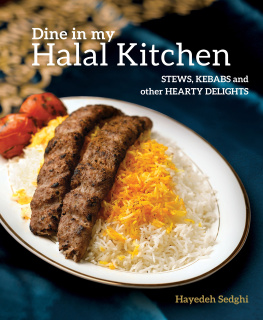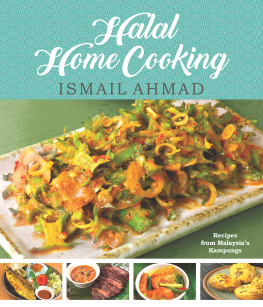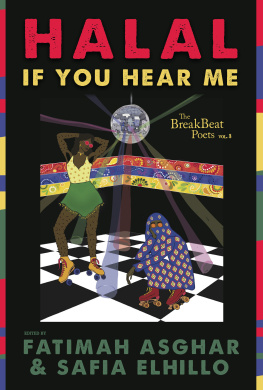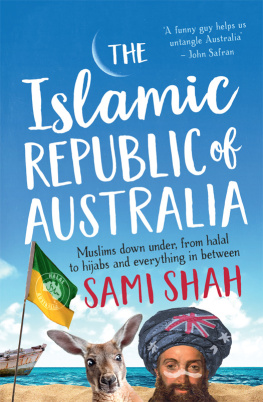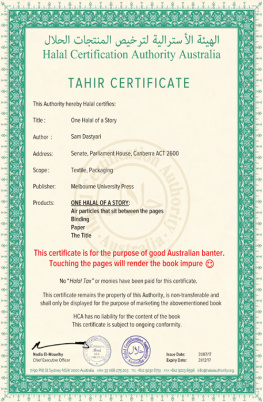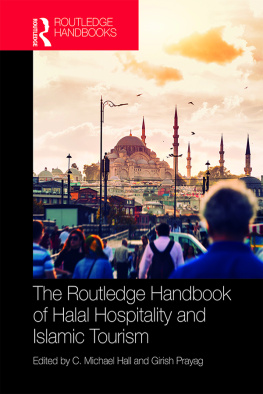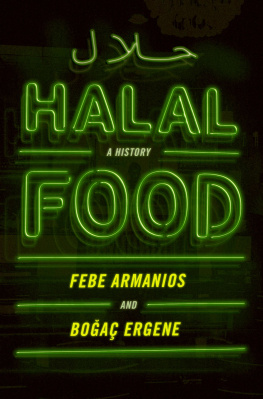HALAL EATERIES: SUCCESS!
Vincent A. Gabriel
Copyright 2014 Vincent Gabriel
Typeset and Cover Design: All rights reserved. No part of this publication may be reproduced or copied in any form or by any means graphic, electronic or mechanical, including photocopying, recording, taping or information retrieval systems without written permission of the copyright holder.
Condition of Sale
This book is sold subject to the condition that it shall not, by way of trade or otherwise, be lent, resold, hired out or otherwise circulated without the copyright holders prior consent in any form of binding or cover other than that in which it is published and without a similar condition including this condition being imposed on the subsequent purchaser.
Disclaimer
The author disclaim all liability and responsibility for loss caused to any person by any act or omission to act directly or indirectly as a result of material contained in this book.
Preface
One of the most important aspects of food history has been the internationalisation of halal eateries.
The affluence of the local Muslim market has attracted sellers from the Middle East, Pakistan and the Islamic communities to put up their food products.
If this trend goes on, Singapore can acquire the hub status of being the Halal Eatery of the world with a focus on the untapped market of China and the central Asian oil-rich republics.
My hope is that reading this book will inspire you to introduce halal eateries into yet untapped areas. Of all the F&B opportunities the halal food business, is currently, one of the best opportunities, not only in Singapore but also in China, and the oil-rich states of Central Asia.
As my title indicates: Welcome World, and I hope you will taste Success soon.
The Approach
No one person can do justice to the task Welcoming the World to the Halal Eateries.
The basics must first be correct before any other structure can be built.
Much of this book is about that basic knowledge.
Then the book expands to beyond the book to the world.
The aim is to inspire creative ideas:
to give consumers more variety
more choice
more pleasure
About the Author
Vincent A. Gabriel has extensive knowledge of the problems and potential of halal eateries. He has served as an official consultant of the Malay Chamber of Commerce and in a similar capacity for private sector firms.
He has extensive international experience of serving in food related activities in Mauritius, the Indian subcontinent and in South East Asia.
His message is that the Muslim communities are underserved by the current suppliers and more can be done for people to enjoy a wider range of food.
The purpose of this book is to stimulate creative ideas.
Table of Content
Halal Eateries: Success!
UNIT 1
Welcome World
At the end of this unit, you will know:
the iron rule of street food: TRACK
the six stage growth spectrum in the Halal food market
the opportunities that become available to innovators of the Halal market
Introduction
This unit is about the opportunities that have become available as Singapore becomes the HUB of the Muslim food market.
Why so?
1. Singapore street food has built up a solid foundation, for hygiene, affordability, reliability of the food and service standards.
2. Halal food, in particular, has followed the iron rule of street food: TRACK
Keeping to the Traditional taste in the early stages to a sweetish, spicy mixture
Eaten with Rice most of the time, and bread sometimes
Affordable in price for all average wage earners
Cooking process according to local Islamic norms
Knowing the Key to the current food market
e.g. in 2013 many Muslim consumers are health conscious and want to keep to LOSSM which stands for Less oil
Less salt
Less sugar
No MSG, no trans-fat
Knowing the Key is important. For example in the 1950s and in the 1960s there was NO Malay food market. The best food was cooked at home. Malay workers brought their food to the workplace.
3. The bread manufacturers were among the first to get the Halal certificates. The fast food vendors also did so and opened a huge pent up demand, especially among the young, for a reliable supply of food, quickly prepared and served with a certain level of service. Fast food brands that are not yet halal in Singapore have found on research, that customers go to Johore Bahru and actually seek out these exact same brands to have their halal food. It makes common sense to get the halal certification as quickly as possible, especially that the supporting infrastructure of meat, fish, vegetables, sauces, spices and enhancers are all available and, best of all, in one place.
4. It may be politically incorrect to talk about this but there are huge pockets of halal consumers in China. They have the buying power but they cannot get enough access to chances to spend their money on things that will enhance their quality of life, like education, food, fashion and health products. Singapore has excellent relations with China and leadership is needed to tap the Singapore and Chinese market to achieve entry into the Chinese Muslim food business opportunities.
Halal food will see a slow gradual shift along the demand for new food and the rising expectations due to improvements in wealth, disposable income and the influence of foreigners.
The six-stage spectrum is: ENABLE
Characteristics | Food Example | Trend |
Easy stage. Food MNC have experience Halal sources, process leaders | Fast food | Local examples e.g. Ramli burger |
Not new. The biggest category is Chinese and Chinese Muslims have the sources, process and leaders | Cantonese food | Yong Tau Foo with halal chicken filling |
Acceptable. Biggest and continuous food market is in the Middle East | Arabia Egypt Iranian Pakistan Southern Thailand Muslim Burma | Kebabs - items using wheat bread Indian Muslim Thai Muslim Cambodia Muslim Burmese Muslim |
Been there: Muslim inspired/western | Morocco Spain USA China | Halal section in the supermarket |
Leadership-expensive food | Gulf states Turkey | High-end eatery Japanese food Korean food Gulf states Good beef |
Extras spice, condiments | Halal premix, sauces enhances | Sweets Salads |
Fig 1.1 Wealth, affluence/food trend table
The ideal development is shown in and that is the development with the strongest roots for success because at each stage the following are ready:
the customers are now the mainstream ones, who have heard from the first time tryers that are the innovators that the food follows the iron law of TRACK.
the price is acceptable. The motive for introducing these foreign items is the ability to attract a higher price for the food offered.
the setting may be ideal. It is a break fast event or a Hari Raya gathering. People like to taste new food. People like to talk about new food. People like to share opinions about new food.
the media may have given the new food item a certain amount of coverage and has created a certain buzz at office conversations or at conversations among friends at lunch time.


